
EVA Pod – The EVA Pod is a fictional spacecraft used for extra-vehicular activity seen in the movie 2001: A Space Odyssey. The Jupiter spacecraft Discovery One carries three of these small, one-man maintenance vehicles.
[EVA – Extra-Vehicular Activity i.e. activity outside of the prime space vehicle.]
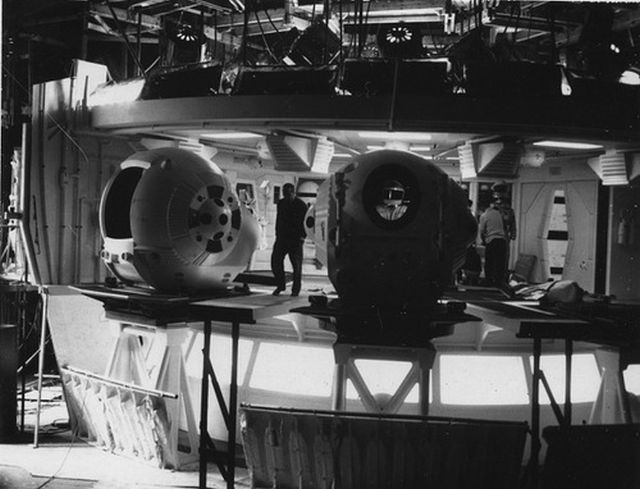
Film stage.
.jpg)
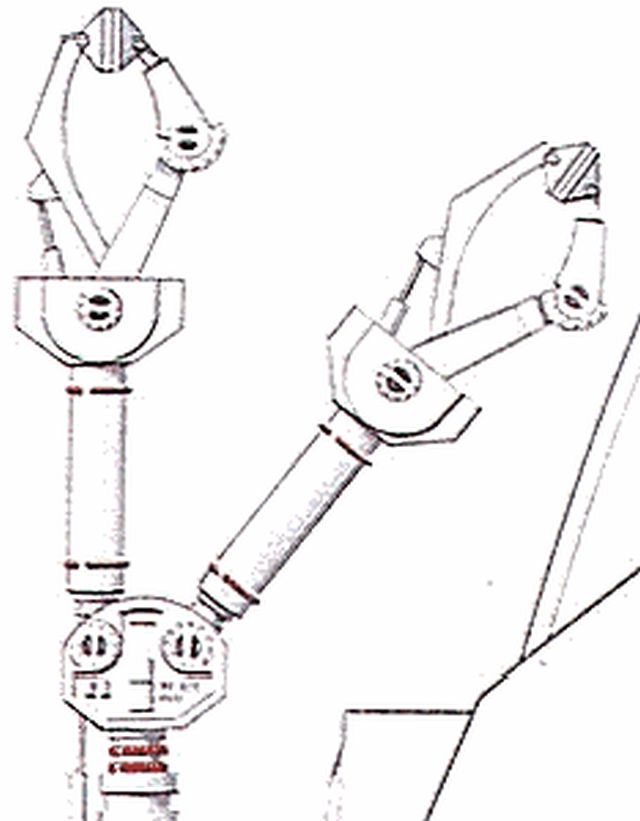
Detail of manipulator arms. Illustrations by Simon Atkinson.
It has always intrigued me as to why the manipulator arms were designed they way they were i.e. a pair of forearms on each arm. Practically one can only use a single arm/gripper at one time. In most scenes featuring the pod in action, only one arm/gripper are used at any one time.

I feel the reason may be that, for large objects, the paired forearms act as a large gripper in itself. For the film, it may have been designed this way as the only practical means of recovering Poole's body, as seen in the two images below.
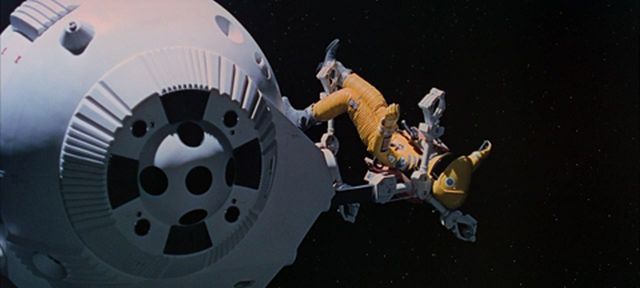
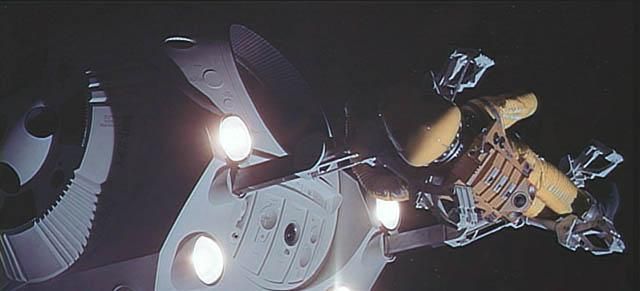
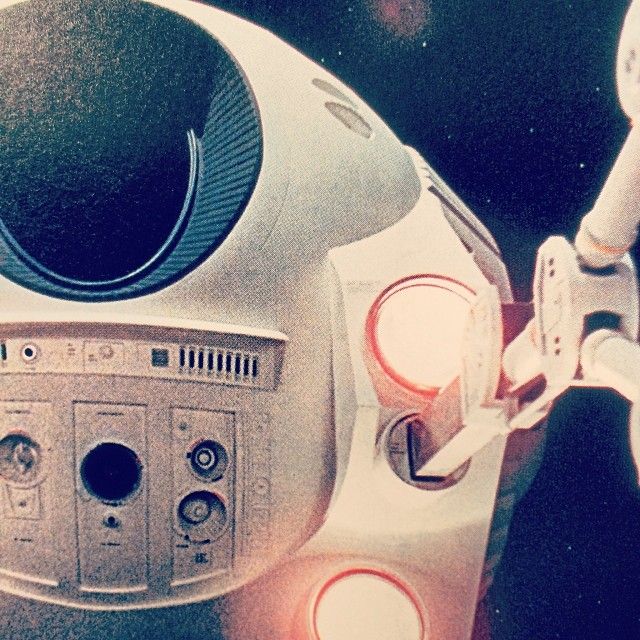
Fred Ordway III was the key technical consultant for Stanley Kubrick's sci-fi masterpiece "2001: A Space Odyssey" .
A lucky moment came in January 1965, as Ordway explained in a book, "2001: A Space Odyssey in Retrospect." He was in New York to meet with publishers for a book he and a colleague, Harry H.K. Lange, had written and illustrated about future life in space. He learned that his friend, Arthur Clarke, a British science writer, was in town and so requested they meet. During their discussion about the space program and Wernher von Braun, they learned each was developing story themes in common.
Clarke happened to be working with Stanley Kubrick on a screenplay for Space Odyssey, which was based on Clarke's earlier work, "The Sentinel." Ordway and Lange's book "Intelligence in the Universe", co-authored by Roger A. MacGowan of the Army Computation Center in Huntsville was essentially the same concept: man facing the immensity of the universe and that life may exist out among the stars.
They showed Clarke their artwork and talked more before adjourning for other engagements. Before leaving the club, Ordway got an unexpected call. It was Kubrick, whom Clarke had notified immediately after his meeting with Ordway and Lange. From then on he was engaged as Kubrick's technical consultant on space issues.
Footnote: August 2014: Sadly, Fred Ordway passed away on July 1, 2014, aged 87. A Harvard graduate and a former NASA scientist for the Saturn V rocket, he had an unquenchable thirst for learning about the universe and excelled as an educator, researcher, consultant and author..
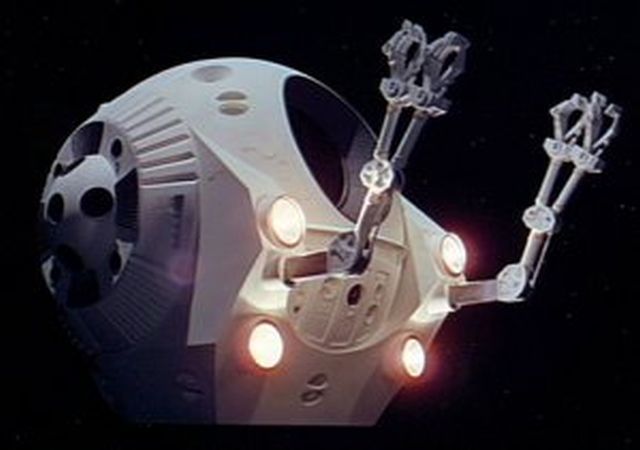
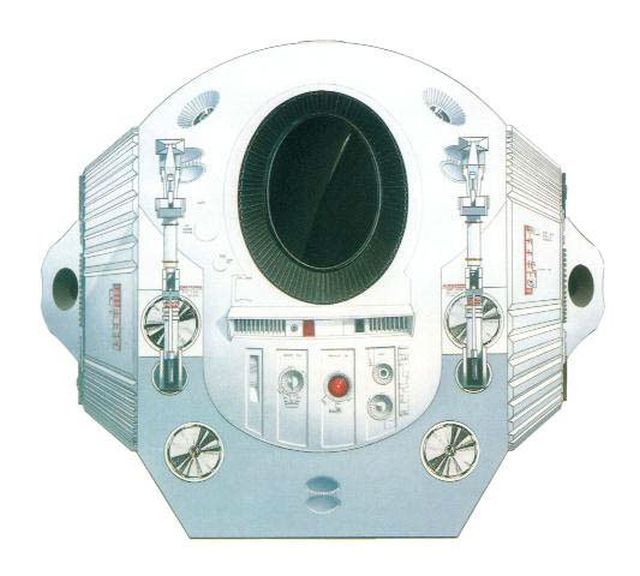
Front Elevation.
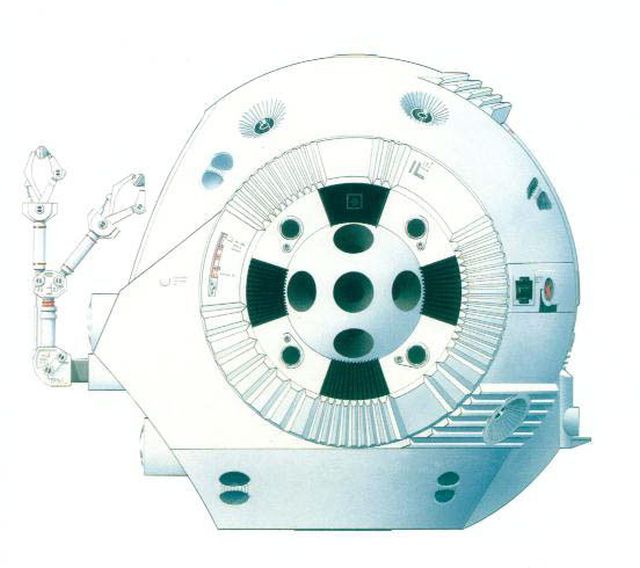
Side Elevation: Illustrations by Simon Atkinson.
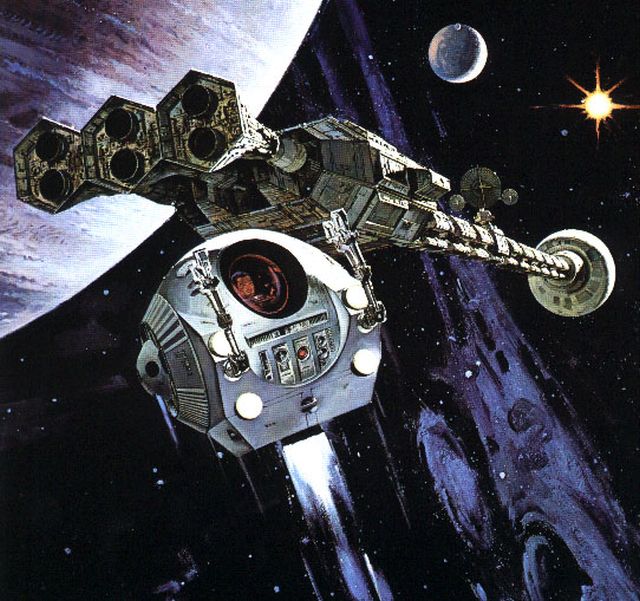
Robert McCall's promotional film poster.
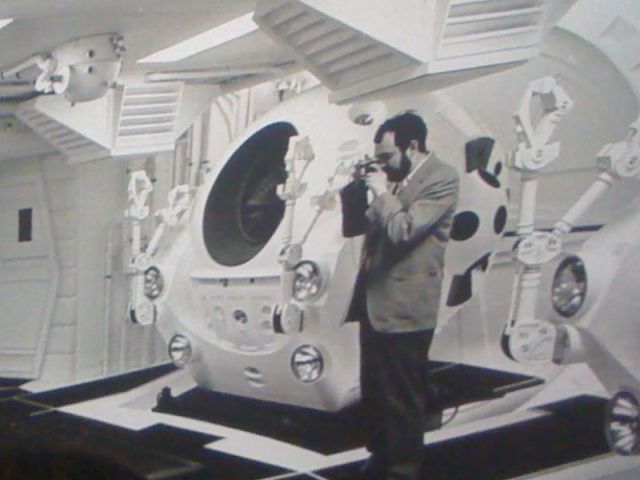
Stanley Kubrick on set with the Pods.

Portrait of Arthur C. Clarke.
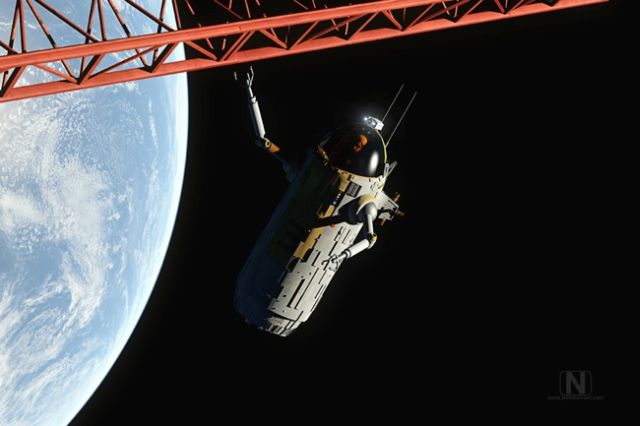
Nemean's Space Pod design as described in Clarke's earlier short stories such as ‘Who’s There?’ and ‘Summertime on Icarus’ is much more of a stubby cylinder.

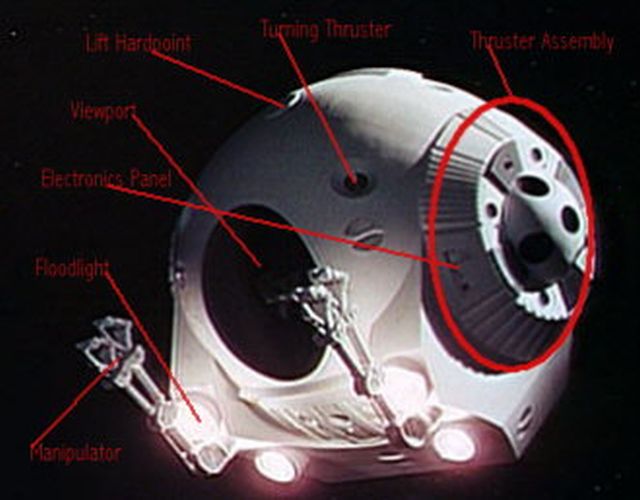
Space Pod Specification: Sourced from here.
EVA Pod
Title: Grumman DC-5 EVA Craft
Number Produced: 45
14 for Space Station Five,
11 for Space Station Four
7 for Space Station Three***
5 Replacement vehicles
4 test vehicles
3 for Discovery One
1 Replica**
1 for Discovery Prototype
Mass at Earth Gravity: 1,387 Kg.
Overall Diameter: 1.98 m.
Capacity: One Person Standard; Three Person Emergency
Propulsion systems: Ten Mk 12 (140 Kgs. Thrust) for major course changes along all axes; Eight Mk 17 (35 Kgs. Thrust) for precision maneuvers; Eight Mk 8 micro-thrusters (10 Kgs.) for low-gravity station-keeping; Five Mk 14 (80 Kgs. Thrust) provide roll; One Mk 37 (500 Kgs. Thrust) for use in emergency.
Life Support: 12 Hrs. (One Person)
Radar: Grumman EPS-2D; Long Range; Active Pulse
Other Equipment: Explosive Bolt Door Separation*; Short-range Object Approach System and Transponder; Complete HAL 9000 Data link System; Automatic Thruster Control; Auto Hover; Eight-Channel communication system; Advanced Manipulator Control System; Two-hour Oxygen Reserve System.
Notes: The Grumman DC-5 carries can carry little in the way of food and water stocks, due to short life support capacity. A single air conditioning vent is provided.
Misc. Technical Information: (From Frederick Ordway and the British Interplanetary Association)
Propulsion: A subliming solid system provides vernier propulsion, wherein the solid propellent sublimes at a constant pressure and is emitted from a nozzle. Such reaction jets will last for long periods of time, have great reliability and use no mechanical valves. The main propulsion system is powered from by storable liquids.
Mechanical Hand Controls: Selection controls are placed on each side so that the appropriate hand must be removed from the manipulator to select a tool or to park. Selection of a tool returns the arm to the 'park' position, where it leaves the 'hand', then the arm goes to the appropriate tool and plugs in. In doing so, it inhibits the 'finger' controls on the manipulator, so that when the operator returns his hand into the glove he can only move a solid object, not individual fingers.
Television: It was found possible to produce all-round TV coverage with eight fixed cameras. This, however, did not give a sufficiently accurate picture for docking or selecting a landing space. For this purpose, the field of view can be narrowed or orientated; controls are included for this purpose.
Normally, the TV link is occupied by the internal camera, so that the parent craft can monitor the pod interior. The pilot can switch in any other camera for specific purposes (survey, etc.) reverting to interior camera for normal work.
Proximity Detector: This is the safety system with omnidirectional coverage working from the main communication aerials. It gives audible warning when the pod approaches a solid object. This is necessary as a safety measure as the pilot cannot monitor seven or eight TV displays continuously. The system also detects an approach to an object, the speed of which is too high to be counteracted by the vernier thrust settings on the control system. In this event, full reverse thrust is applied, overriding the manual control setting. The system depends upon a frequency modulated transmission and under safe conditions results in a low, soft audible background signal. This continuous signal is considered necessary in order to provide a continuous check on a vital safety system. If the speed of an approach to an object becomes dangerous compared with the distance from it, the tone becomes louder and higher pitched, and, if unchecked, end in a shrill note accompanied by reverse thrust. The system also works in conjunction with a transponder (to the give the necessary increased range) to measure distance from the Discovery.
Flying Controls: Manual controls are considered necessary both as a standby and for local maneuvers. Two hand control sticks, each with two degrees of freedom and fitted with twist grips, provide the necessary control about six axes.
Analog information is presented for attitude, heading rate and distance; these can be referred to local ground (for landing, takeoff, etc.), course (which enables the pilot to face forward, head up, on any preselected course, or parent ship (for docking, local maneuvers, etc.) This data has to be presented, as the pilot has to act immediately on them. This is the most easily assimilated display. A variation in full scale rate, which can be applied by the control sticks, is included; this allows the full stick movements to result in any proportion of vernier motor thrust, thus giving a 'fine' control for local maneuvers.
Notes:
*When I think about it, I don't think the door ever separated from the pod. It seems that it was simply opened extremely quickly by the explosive bolts. If the door actually WAS blown off, it would have smashed into the airlock's outer door; breaking into several pieces. This would fly back towards Dave, and as many people would put it, that would be a very bad thing.
**This is non-operational, and do not carry any functional systems. The single replica is currently on display at the NASM's "21st Century Space Flight" display.
***Earlier Space Stations are not capable of supporting the design.
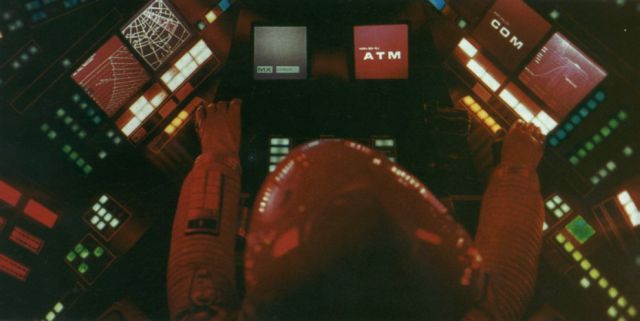
Interior of the Pod.
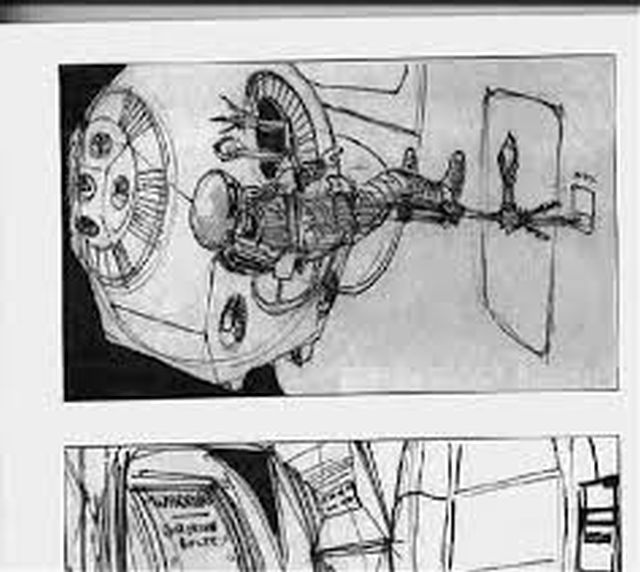
Pre-production sketches.
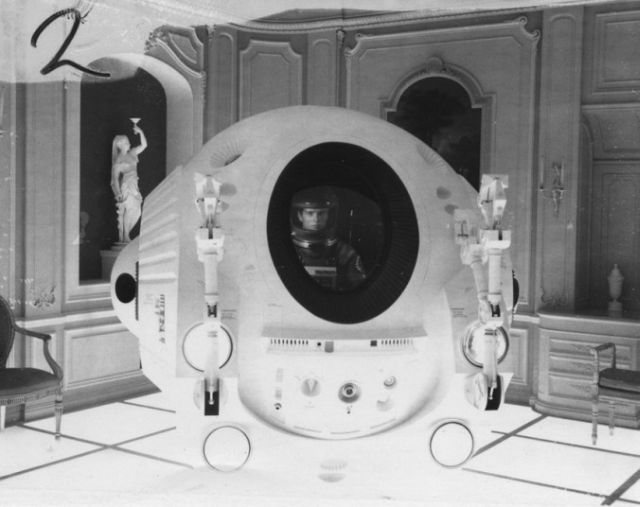

See other early Space Teleoperators here.
See other early Lunar and Space Robots here.